A well-manicured lawn is a place for pets to play, entertain and relax and can greatly increase the value of a home, not to mention its owner’s lifestyle. However, in extreme heat and drought, maintaining a lush, green, and beautiful garden can be difficult. Summer is a difficult time of year for your lawn. Although many think there is nothing they can do, there are many ways that you can maintain your lawn during the summer and drought with minimal water use. We’ve put together the best tips for proper lawn care during this season.
Proper Lawn Care When It’s Hot In Summer – Mow a Little Higher Than Normal
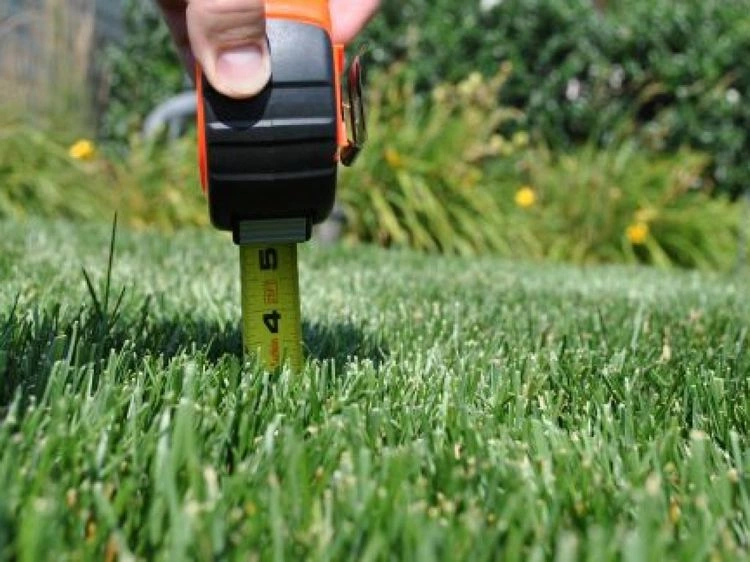
Since grass is a living organism, it takes time and energy to grow so that you can enjoy a fantastic landscape. When it is cut, the grass’s ability to generate energy is greatly reduced. The larger the plant, the deeper the roots, and the deeper the roots, the more moisture the plant can extract from the soil. Also, taller grass shades the ground more, which in turn prevents the moisture it contains from evaporating from extreme heat.
Lawn Care Tips and Tricks – Sharp Lawn Mower Blades
A sharp lawn mower blade is always recommended, but especially important when the heat is affecting your lawn. The clean cut of the blades of grass prevents diseases from creeping into the lawn. Using a dull blade will split, fray and tear the grass, which is unnecessary stress for the lawn.
Proper Lawn Care in The Heat – An Important Rule
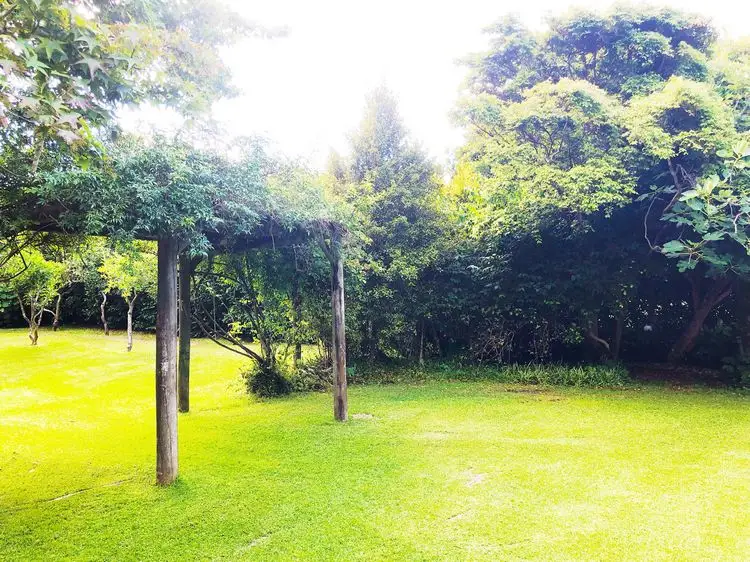
When trimming your lawn in the heat, follow the 1/3 rule: never remove more than 1/3 of the grass height at a time. Following this rule will keep your lawn cooler because less plant mass is removed. This allows your lawn to thrive.
When to Mow?
Most of us take it for granted that we mow when it’s cooler outside. Who wants to struggle in the scorching heat? Not mowing in the middle of the day also has benefits for your lawn.
The ideal time for mowing your lawn is between 9am and 11am and between 5pm and 7pm. If you mow at these hours, your lawn will be at its heaviest during the summer days, meaning it can take the cut. If you mow in the heat, you put too much stress on the lawn, which can eventually lead to lawn disease and other problems.
Do Not Mow During a Drought
Try not to mow during a drought. The lawn has limited recovery abilities from mowing during the drought, and it can do even more damage. Try mowing after a rainfall or after a watering day. Also, try not to mow while the grass is still wet to avoid clumping.
Lawn Care in Hot and Dry Conditions: How Often and When to Water?
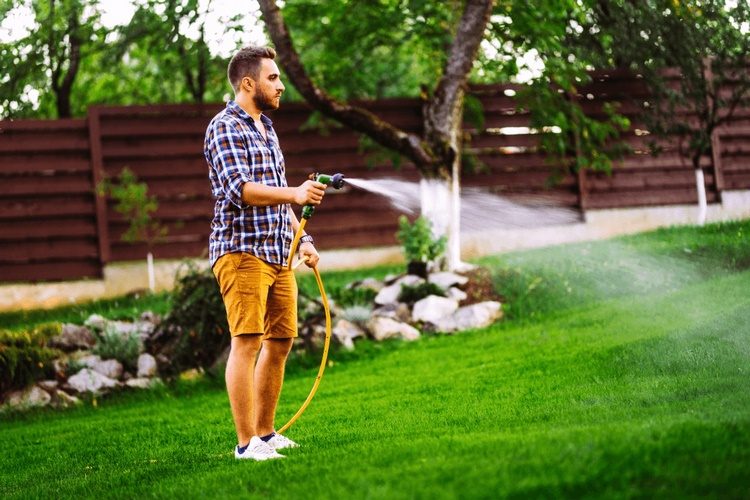
Many people water their lawns after it has rained. In general, the lawn does better when the soil is dry rather than wet. If the soil is constantly wet, it can cause many problems for both plants and soil organisms. Wet soil deprives plant roots of oxygen, making them more susceptible to disease. Try not to water daily, but water deeply and infrequently. Deep watering means the entire root zone is moistened. Infrequent watering means you only water when the grass is dry.
Water as early as possible in the morning when the lawn can fully absorb the water before the sun dries it out by midday. Watering in the evening allows the water to sit overnight without drying out, which can lead to mold and fungus.
Avoid Aeration, Scarification and Lawn Fertilization In Summer
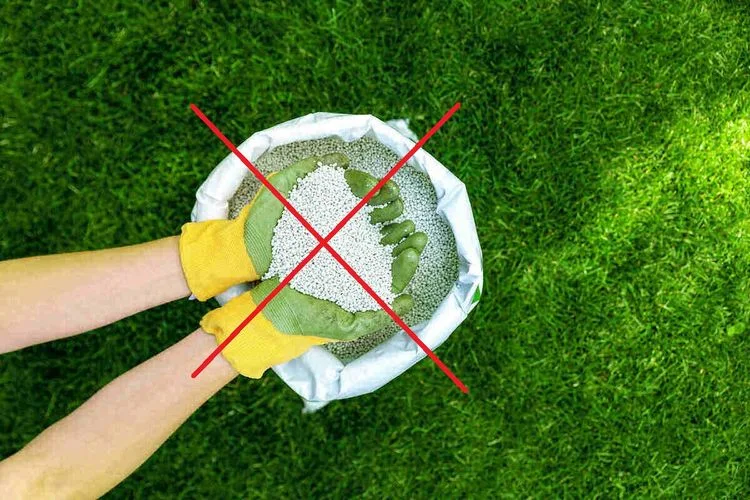
While fertilizing your lawn may seem like a good idea, it’s best not to do so during the heat of the summer months. In summer, the lawn consumes more energy than it produces. Fertilizer promotes growth, which means the grass uses even more energy and puts even more strain on an already stressed lawn. It is best to fertilize in the fall as part of preparing your lawn for winter.
The same rules apply to maintenance measures such as aeration and scarification. Refrain from aggressive practices that cause temporary damage during summer heat waves. Instead, cultivate in the fall or spring when the lawn is vigorous and can quickly recover from temporary damage.
Don’t Leave Things Lying Around for Long
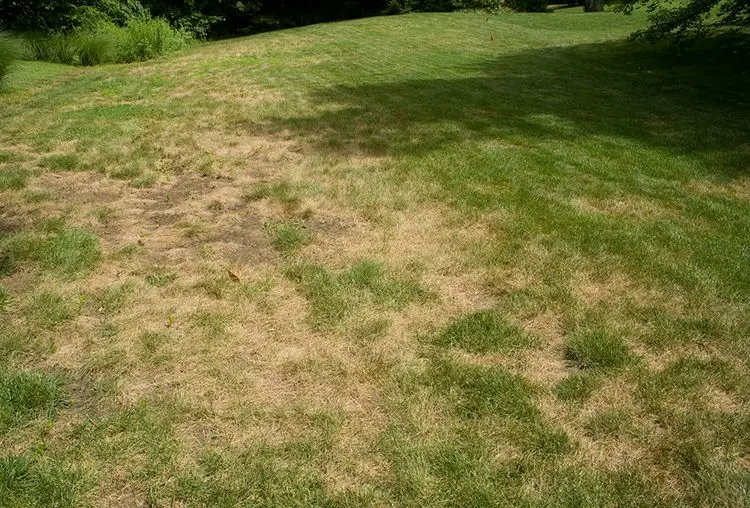
Picnic blankets, inflatable pools and even dog toys left on the lawn for long periods of time can disrupt the plants natural cooling mechanism. Make it a habit to tidy up at the end of each day and try to put the items in a different place the next time you use them.
It is also worth changing your path across the lawn regularly. In this way you will avoid bald spots. Find a different spot for your afternoon coffee every day. If you have soccer goal posts for the kids on the lawn, move them a few times a week to allow the lawn to recover.
